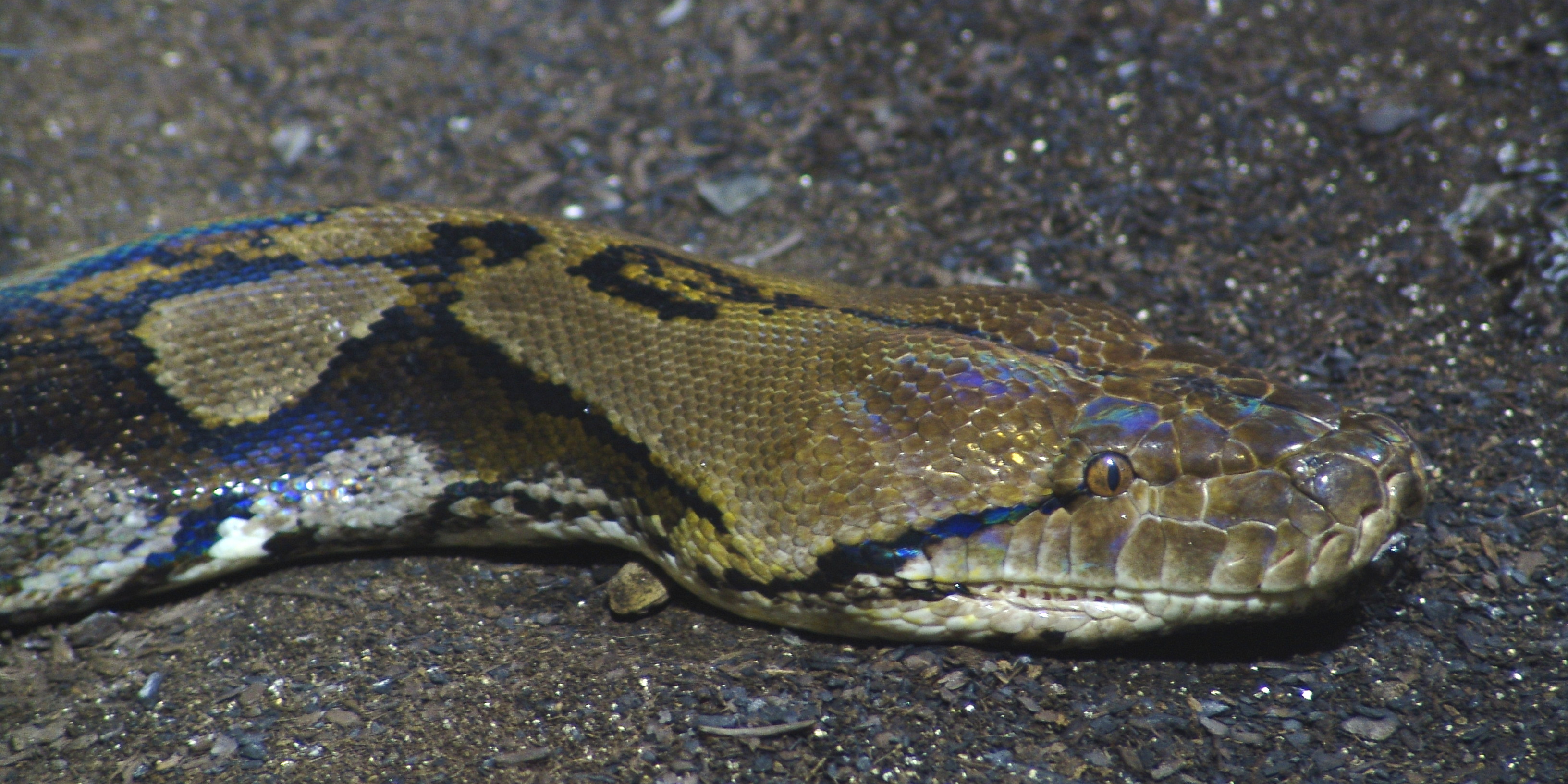Adaptation
 The
reticulated python exhibits a number of adaptations that have helped it
survive and which set it apart from the other species. Some of these
adaptations include its jaws, size, skin pattern, and method for
killing prey.
The
reticulated python exhibits a number of adaptations that have helped it
survive and which set it apart from the other species. Some of these
adaptations include its jaws, size, skin pattern, and method for
killing prey.
The reticulated python's size alone makes it a threat to very large organisms, and also enables it to consume larger prey. The reticulated python attacks its prey by biting
it quickly, and pulling it into its' grasp. Once entangled, the
creature has little chance of survival, as the python carefully coils
itself around the prey and begins to constrict it, or tighten itself.
This usually does not break any bones in the prey animal, but
rather causes the animal to lose breath and eventually suffocate.
The
reticulated python's coloration or skin pattern also has aided in its survival.
It is colored much like its surroundings, and can blend into low lying and
aquatic environments very well.
Possibly
the coolest adaptation this species exhibits is its ability to unhinge
its jaw and consume its prey completely whole. Its skin is also very
stretchable, which allows it to compensate for consuming such large
prey items.

 The
reticulated python exhibits a number of adaptations that have helped it
survive and which set it apart from the other species. Some of these
adaptations include its jaws, size, skin pattern, and method for
killing prey.
The
reticulated python exhibits a number of adaptations that have helped it
survive and which set it apart from the other species. Some of these
adaptations include its jaws, size, skin pattern, and method for
killing prey.